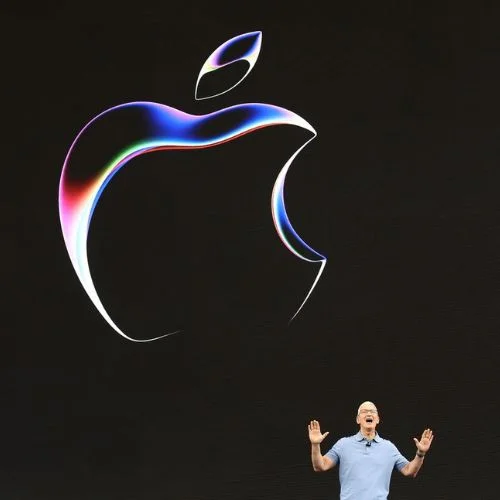The cash we use is going advanced. Here, we take a gander at the different sorts of computerized cash accessible, and what recognizes them. Basically, all that these days have a computerized same, and cash is no exemption. Zeros and ones are fit for addressing and sending abundance in manners that conventional techniques can’t equal. Advanced monetary forms are speedy, lightweight, and progressively helpful.
Computerized cash is a sort of cash that is accessible just in a computerized structure. It very well may be put away in a concentrated data set or on a decentralized record or blockchain.
Advanced cash can possibly totally change society’s opinion on cash. The ascent of Bitcoin, Ethereum, and a large number of other cryptographic forms of money that exist just in electronic structure has driven worldwide national banks to explore how public computerized monetary standards could function.
Anyway, are computerized cash and cryptographic money the equivalent? Not exactly. Cryptographic money is only one sort of computerized cash. While you want computerized innovation to make functional digital money, you needn’t bother with cryptography to carefully make cash that main exists.
Computerized money is any cash that is accessible solely in an electronic structure. Electronic forms of money currently prevail in most nations’ monetary frameworks. In the U.S., for example, the actual U.S. cash available for use is something like one-10th of by and large cash supply; the rest of held in different bank stores in an electronic structure.
What is a Digital Currency?
What separates advanced money from the electronic cash presently in many Americans’ financial balances is that it never takes actual structure. At present, you could go to an ATM and transform an electronic record of your money property into actual dollars. Computerized cash, notwithstanding, never takes actual structure. It generally stays on a PC organization and is traded through computerized implies.
For instance, rather than utilizing actual dollar notes, you’d make buys by moving computerized cash to retailers utilizing your cell phone. Practically, this might be the same as how you at present treat your cash utilizing installment applications like Venmo, Paypal, or Apple pay.
Following the fruitful send-off of decentralized cryptographic forms of money like bitcoin and Ethereum, which store esteem but are not overseen by any focal specialists, legislatures and national banks all over the planet are exploring the chance of making their advanced monetary standards, generally known as national bank computerized monetary forms.
Types of digital currency
Digital currency standards can be lumped into three classes. Rigorously talking, there’s a smidgen of cross-over between them – yet if you can see every one of the three, then you’re more than halfway toward understanding how computerized monetary standards work.
1. Virtual currency
The term ‘virtual money’ occurred in 2012 when the EU characterized it. It’s cash that has been given by a confidential association for a specific utilize on the web. Virtual monetary standards can be shut or open.
Shut virtual monetary forms are confined to a specific framework, similar to the cash you could spend in a web-based pretending game, similar to gold in World of Warcraft. Open monetary standards can be traded for different monetary forms beyond a given stage. Cryptographic forms of money would be incorporated here.
2. Central bank digital currency
The central bank of a given nation could choose to put up its computerized cash together to supplement or supplant the current government-issued money (conventional officially sanctioned cash).
The Bank of England is thinking about setting one up, yet it’s particularly sharp that we don’t call it ‘Bitcoin’ because it sounds excessively like Bitcoin. While the worth of a crypto resource like Bitcoin is intrinsically unstable (implying that its worth can change decisively in manners that are hard to foresee), a CBDC would enjoy the benefit of being more reliable.
Thus, you could really have the op involve it as a store of significant worth, similarly, to that you utilize real. As a matter of fact, on account of the proposed CBDC in the UK, the worth of the money would be attached to the benefit of reality. As a result, the money in your pocket would constantly merit equivalent to its computerized same.
What Is a Central Bank Digital Currency (CBDC)?
A central bank digital currency (CBDC) is advanced cash that would be given and regulated by a country’s national bank. Think about it like Bitcoin, however assuming Bitcoin was overseen by the Federal Reserve and had the full sponsorship of the U.S. government.
While no public national bank has yet sent off its advanced cash, something like 80% of national banks are at present investigating this innovation.
In the U.S., the Federal Reserve and M.I.T. are mutually directing examination into a CBDC through Project Hamilton. As well as deciding how computerized cash would function in the U.S. furthermore, what sort of frameworks would be expected to get it going, Project Hamilton plans to distribute an exploration paper and make an open-source permit for any code they compose so others can inspect and work with it.
Regardless of this examination, in a late declaration before Congress, Federal Reserve Chairman Jerome Powell as of late remarked that the chance of a Fed-supported computerized dollar stays remote until further notice.
How Would a CBDC Work?
While an American CBDC might be distant as of now, Jim Cunha, senior VP at the Federal Reserve Bank of Boston, shared how a CBDC or a computerized dollar could work. A CBDC would work like genuine money, Cunha said. “If I gave you CBDC, maybe I’m giving you actual cash, similar to a $100 note. You’d have that cash in your record and it’s yours. I was unable to take it back.”
This is a key contrast versus different types of electronic installments today, such as an ACH move or PayPal. “Assuming that I send you to cash through PayPal, it’s simply a commitment that cash is coming. Your equilibrium might show the assets, yet cash hasn’t moved between banks yet.”
Hence, the exchanges are not unavoidable and it’s feasible for the other party to switch; there are 60 days when an ACH move can be possibly loosened up. With moves through CBDC, the assets would be sent near immediately and the other party couldn’t drop later.
One more key benefit of a CBDC is that it very well may be considered lawful and delicate. That implies all monetary entertainers should acknowledge it for any legitimate purposes. “You could pay your assessments with it. Anybody you owe an obligation to, similar to the bank or people, legitimately are expected to take it,” Cunha said.
This is as opposed to other computerized monetary standards, which are not lawful delicate in the United States. Just certain merchants acknowledge crypto straightforwardly, so individuals might have to change over their digital forms of money into U.S. dollars before making most exchanges. At the point when you use crypto as a type of installment, you likewise right now make an available occasion, and that implies you might owe capital increases burdens each time you buy something with Bitcoin or Ether. This is notwithstanding any deal charges. With a CBDC, you would just owe any material deals charges, very much as you do utilize actual cash.
How Have Digital Currencies Worked Around the World?
Notwithstanding the possible advantages of a U.S. CBDC, it stays an idea for the present. All over the planet, different nations are somewhat further alongside computerized monetary standards, for example, the Bahamas’ Sand Dollar project, which is underway right now, and China’s computerized yuan, which is one of the biggest CBDC programs and sent off a pilot project in 2014.
“They are trying a pilot in five urban communities. They gave out millions in cash through lotteries just to demonstrate it works,” said Cunha. Individuals who score that sweepstakes get neighborhood shops that acknowledge it.
While it’s not at a public scale yet, when China has the stage prepared, it will grow through banks and portable suppliers, such as Alipay. The national banks of China and UAE are likewise free CBDC, which they can spend on dealing with a task to utilize blockchain and CBDC for local installments between countries. On the off chance that these undertakings are a triumph, they could give more inspiration for different countries to make their own CBDC.
On account of these patterns, Lilya Tessler, on top of Sidley’s FinTech and Blockchain bunch, is hopeful about the future utilization of advanced monetary standards. “We surely will see mass reception of advanced monetary standards, yet it is challenging to foresee how it will look. A CBDC might supplant the paper variant of the U.S. dollar. Simultaneously, society might zero in on the standard reception of decentralized digital money.”
How Would Digital Currency Affect You?
On the off chance that the U.S. takes on computerized money, it would function as a choice to cash yet would likewise enjoy the inherent benefit of fast cash move since it’s electronic. Cunha has a couple of thoughts on what this would resemble for buyers. “We assume that it will be free or approach free, similar to cash. Other confidential area players might advance on top of it and conceivably add charges, yet that must be fully explored more.”
Even though computerized money would be electronic, it actually should be essentially as open as money. “Anybody ought to be capable use it, in addition to those with the most recent cell phones,” Cunha said, proposing chip-based cards, POS frameworks, and web accounts as elective ways of getting to the CBDC. He likewise trusts a method for taking care of exchanges disconnected should be grown, so two individuals could trade CBDC regardless of whether they aren’t on a cell or Wifi organization.
There’s a ton to be finished and a ton of industry input required, Cunha concedes, yet it very well may be definitely worth the speculation. “While no choice has been made to move past this examination, I accept a CBDC ought to be completely researched and holds extraordinary potential,” he said. “Simply consider the web and how far it’s come since the good ‘old days. With CBDC, the conceivable outcomes are inestimable.”
Cryptocurrency
A cryptocurrency utilizes an encoded record. As opposed to depending on a focal power to get exchanges, crypto clients favor numerical calculations. The way that this works requires some investment to get your head around, yet it merits the work, as this stuff might well address the fate of the business.
Digital currencies are characterized by cryptography — the encryption used to make the money — instead of their computerized nature. The primary coin of this sort was Bitcoin, yet numerous others have since arisen (the majority of which have fallen).
The open step gives an outline of bitcoin and other related monetary forms. On the off chance that you’d like a more extensive comprehension of the subject, and what the different altcoins are about, then, at that point, us past bitcoin tech-out from the University of Michigan is an incredible spot to begin.
Bitcoin is a decent spot to begin finding out about crypto, as a large number of the choices share at any rate a portion of the elements of the first digital currency.
What about NFTs?
Monetary standards like Bitcoin are fungible tokens. This implies that each bitcoin is equivalent to some other bitcoin. They’re in no way related to Non-fungible Tokens, or NFTs, which can be utilized to demonstrate responsibility for resources, similar to masterpieces.
What is Blockchain?
Blockchain is the innovation that broadly permits Bitcoin and other digital currencies to work. In any case, this is only one utilization of the innovation.
A blockchain is a type of dispersed record or information base. Whenever a change is made to the record, for example, when you send cash starting with one party and then onto the next, the change should be checked by different gatherings, forestalling altering. When everything is checked, the progressions are kept in blocks, which are added to the furthest limit of a chain of them.
The record is disseminated across numerous clients and checked consistently to guarantee that everybody has a similar form. This successfully implies that the exchanges we record in the record are irreversible.
Uses of cryptocurrency
1. Making a lot of money
There are numerous common-sense reasons we could favor cryptographic money over different kinds of cash. By the by, we shouldn’t disregard the significant draw factor: cash.
The worth of crypto has seen a few sensational pinnacles and boxes lately, which is driving interest. Writers, YouTubers, and bloggers should rest assured that a title about the cost of Bitcoin flooding past £60,000 will produce clicks. This dash for unheard-of wealth culture doesn’t imply that digital currencies aren’t very helpful.
2. Censorship resistance
Since your responsibility for crypto coins is guaranteed through math, it’s impossible that an administration can hold onto them. Assuming you’re making adversaries in high places, you should rest assured that your crypto isn’t going to be seized.
3. Anonymity
Particular sorts of cryptographic forms of money are planned in light of security. Your bank will not have the option to see who you’re paying and by whom you’re being paid. Once more, this is said to engage residents.
4. Low-cost transfers
It is intrinsically costly to Send cash across borders. You need to go through an extended regulatory cycle. The right digital money will dispose of this.
Advantages of digital currency
1. Protection from expansion
The expansion has made numerous monetary standards get their worth declined with time. Pretty much every digital currency, at the hour of its send-off, is delivered with a proper sum. The source code determines how much any coin is; like, there are just 21 million Bitcoins delivered on the planet. In this way, as the interest expands, its worth will build which will stay aware of the market and, over the long haul, forestall expansion.
2. Self-represented and made due
Administration and support of any cash is a central point for its turn of events. The cryptographic money exchanges are put away by designers/diggers on their equipment, and they get the exchange expense as a prize for doing as such. Since the excavators are getting compensated for it, they keep exchange records precise and modern, keeping the uprightness of the cryptographic money and the records decentralized.
3. Secure and private
Protection and security have forever been the main issue for digital currencies. The blockchain record depends on various numerical riddles, which are difficult to interpret. This makes digital money safer than normal electronic exchanges. Digital currencies, for better security and protection, use pen names that are detached from any client, or account or put away information that could be connected to a profile.
4. Currency traders should be possible without any problem
Cryptographic money can be purchased utilizing numerous monetary forms like the US dollar, European euro, British pound, Indian rupee, or Japanese yen. With the assistance of various cryptographic money wallets and trades, one cash can be changed over into the other by exchanging digital currency, across various wallets, and with insignificant exchange expenses.
5. Decentralized
A significant star of digital currency is that they are decentralized. A ton of digital currencies are constrained by the engineers utilizing them and individuals who have a lot of the coin, or by an association to foster it before it is delivered into the market. The decentralization helps hold the cash syndication free and under wraps so nobody association can decide the stream and the worth of the coin, which, thusly, will keep it steady and secure, dissimilar to government-issued types of money which are constrained by the public authority
Disadvantages of digital currency
There are a few obvious downsides to this switch. Some of them are practical, others are a little more philosophical and dystopian.
1. Too numerous monetary standards to explore right now
The ongoing notoriety of cryptographic money is a drawback. “Such countless advanced monetary standards are being made across various blockchains that all have their limits. It will require investment to figure out which advanced monetary standards might be suitable for specific use cases, including whether some are intended to scale for mass reception,” said Tessler.
2. Takes work to figure out how to utilize them
Computerized monetary standards require work for the client to figure out how to perform principal undertakings, similar to how to open a computerized wallet and appropriately store advanced resources safely. For advanced monetary standards to be all the more broadly embraced, the framework needs to get easier.
3. Blockchain exchanges can be costly
Digital forms of money utilize the blockchain, where PCs should settle complex conditions to check and record exchanges. This takes significant power and gets more costly as there are more exchanges. These would presumably not exist for a CBDC, be that as it may, since it would probably be constrained by the national bank and the mind-boggling agreement processes are not required.
4. Large swings in computerized cash costs
Cryptographic money costs and worth can change unexpectedly. Cunha accepts to this end organizations are hesitant to involve it as a mode of trade. “As a business, would I like to acknowledge something unpredictable? Consider the possibility that I hold a Bitcoin for a week and it loses 20% of its worth?” With CBDC, however, the worth is much stabler, similar to paper money, and can’t vary this way.
5. Developing a CBDC will take time and duty dollars
A U.S. CBDC is as yet theoretical. Assuming that the public authority chooses to make one, there will be expenses related to its turn of events.
6. Lack of protection
CBDCs can permit each pound you at any point spend to be remotely checked. This would tighten the mass reconnaissance up a couple of scores, to gently put it. Among the most intense backers of this shift are Communist Party policymakers in China.















